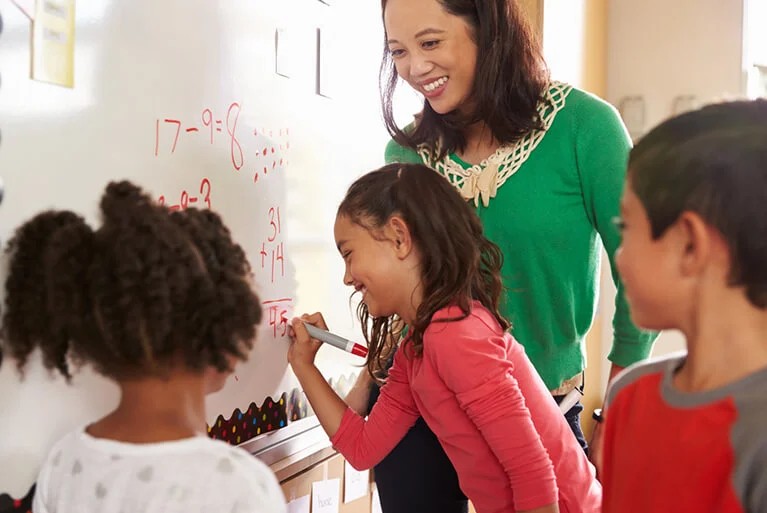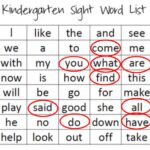Addition marks a significant milestone in a child’s mathematical journey, building upon their foundational number sense. While it can be a challenging concept for young learners to grasp and for educators to teach effectively, a structured approach can make the process smoother and more successful.
This guide presents a 7-step process designed to simplify lesson planning and foster a deeper understanding of addition in students.
1. Start with Concrete Manipulatives for Addition
To make addition tangible and comprehensible, begin by introducing countable manipulatives—physical objects that students can touch and move. The key is to use a variety of manipulatives to help students understand that the concept of addition is independent of the objects being counted.
Initially, using fingers is a natural and intuitive starting point. From there, transition to other manipulatives like tokens, bottle caps, or paper cut-outs. To incorporate movement and engagement, try grouping students and having them join together, physically demonstrating addition as they count the total number of students in the combined group.
2. Transition to Visual Representations of Addition
Once students are comfortable with manipulatives, begin to bridge the gap to abstract concepts by using visual representations of addition problems on paper. This can involve illustrated sums or having students draw objects to represent the numbers they are adding.
It’s most effective to pair visuals directly with numerical symbols to reinforce the association between the concrete representation and the abstract number. Consider using a graphic organizer with the addition problem written at the top and dedicated spaces beneath each number where students can draw corresponding objects. This visual structure aids in comprehension and organization.
3. Introduce the Number Line for Addition
At this stage, many students still rely on counting every number in an addition problem to find the solution. Introducing a number line provides a more efficient strategy by eliminating the need to count out the first number in the sum.
For example, when solving 4 + 3, students can place their finger on the number 4 directly on the number line. Then, they simply count up three places along the line to reach 7. This method allows them to start from the first addend and count on, streamlining the addition process. The number line becomes a visual tool that supports the ‘counting on’ strategy.
4. Develop Mental “Counting Up” Strategies
After students master the number line, the next step is to internalize the “counting up” strategy and apply it mentally. This transition from a visual aid to a mental technique is crucial for developing fluency in addition.
Practice this mental strategy using fingers to keep track of the count. Using our example of 4 + 3 again:
- Students start with a closed fist and say the first number, “4”.
- Then, they count up, extending one finger at a time for each count: “5, 6, 7”.
- At the end, they have three fingers extended, representing the ‘add 3’ part of the problem. However, emphasize that the answer is not 3, but the final number reached after counting up from 4, which is 7. This reinforces that they started at 4 and added 3 more.
5. Teach the “Making Ten” Strategy for Addition Fluency
This is a valuable mental math strategy that significantly enhances procedural fluency in addition. Instead of directly adding two numbers, encourage students to decompose numbers to make a ten and then add the remainder. This strategy is particularly useful for bridging ten and working with larger numbers later on.
For example, to solve 7 + 5:
- Students recognize that 7 needs 3 more to reach 10. So, they break down 5 into 3 + 2.
- They add 7 + 3 = 10.
- Then, they add the remaining 2: 10 + 2 = 12.
Manipulatives can be used to visually demonstrate this strategy. Draw two rows of ten boxes on paper. Have students use manipulatives to represent the sum within these boxes. Then, guide them to see how rearranging the manipulatives to fill one row of ten simplifies the addition and visually represents the “making ten” strategy.
Number talks are also an excellent way to practice and internalize this strategy. Model the “making ten” approach first, and then encourage students to verbally explain their thought process for solving addition problems using this method.
6. Introduce Addition Word Problems to Enhance Application
Word problems are essential for helping students recognize addition scenarios in different contexts, even when they are not explicitly presented as numerical sums. Begin by familiarizing students with the language commonly associated with addition. This includes terms and phrases like:
- plus
- more than
- increased by
- sum of
- total
- altogether
- in total
Once students are comfortable with this vocabulary, introduce simple problem-solving and reasoning activities framed as word problems. Start with straightforward scenarios and gradually increase the complexity as their understanding grows. This helps them to apply their addition skills in practical contexts.
7. Emphasize Memorization of Addition Facts for Fluency
Ultimately, the goal is for students to perform addition quickly and accurately mentally. Procedural fluency in addition is crucial as they progress to more complex mathematical concepts. Memorizing basic addition facts is a foundational step towards achieving this fluency.
Here are effective strategies to support memorization:
Break Down Addition Facts
The entire addition facts table can be daunting. Break it into manageable sections, focusing on specific sets of facts at a time. For example, dedicate one week to practicing +1 and +2 facts, and another week to focusing on number pairs that sum to 10. This segmented approach makes memorization less overwhelming and more focused.
Gamify Addition Practice
Turn rote learning into engaging activities by incorporating quizzes, group challenges, and reward systems. Gamification can make practice more enjoyable and motivating. However, ensure a balanced approach to avoid excessive competition that might discourage students who are struggling.
Here are 10 simple ways to gamify your classroom.
Leverage EdTech Tools for Addition Learning
Online learning programs offer interactive and engaging virtual environments for teaching and practicing addition. High-quality educational technology can provide personalized learning experiences and make practice more appealing to students. If you choose a program that students enjoy and can access independently, they are more likely to engage in extra practice outside of the classroom, reinforcing their learning.
Programs like Mathseeds and Mathletics integrate all these strategies into their award-winning platforms. Explore these resources to discover how they can further enhance your students’ addition skills.
Level up your students’ addition skills with our award-winning mathematics learning programs.
Explore now


